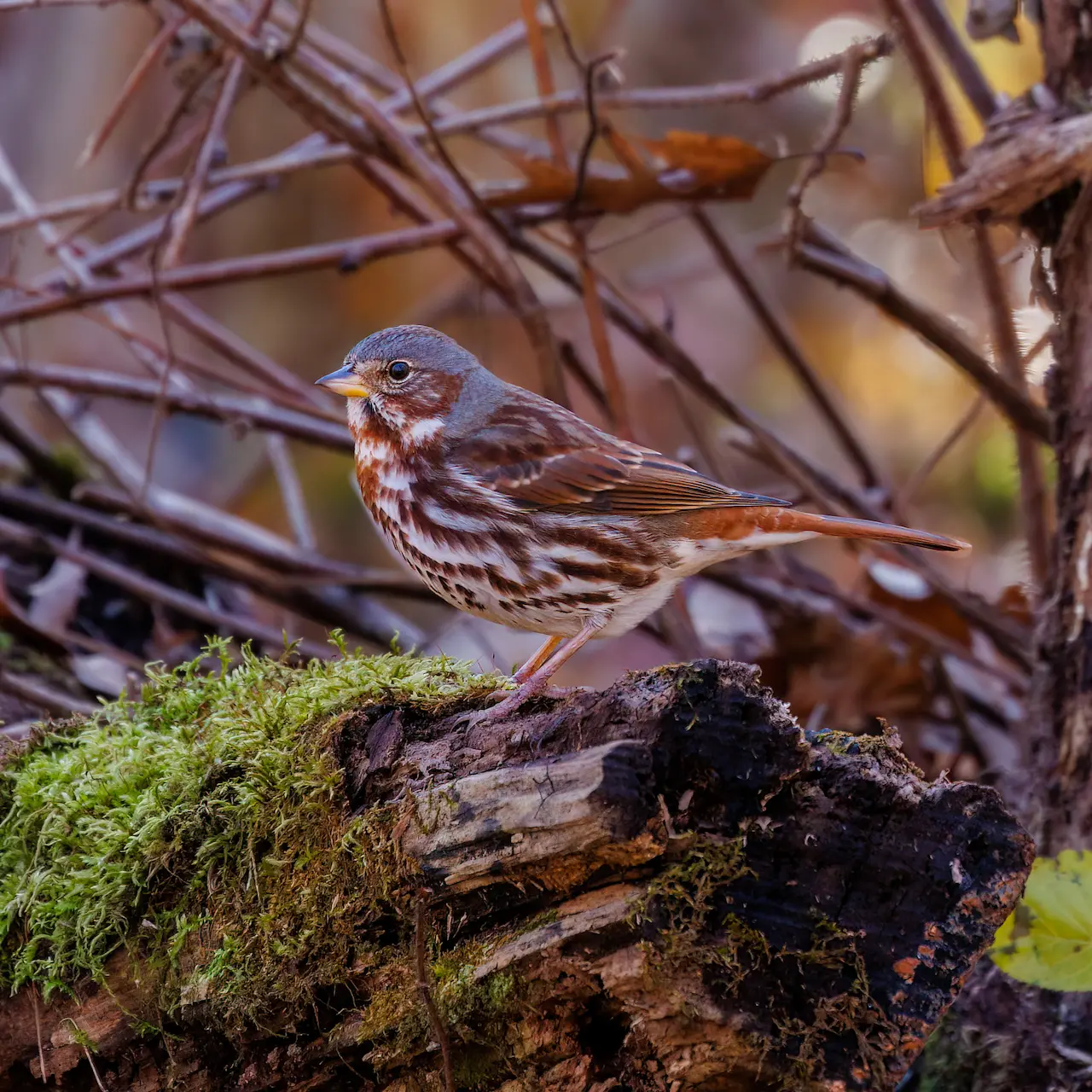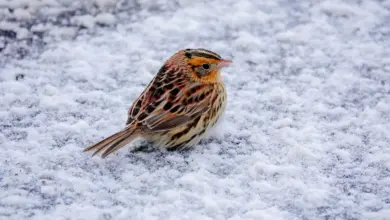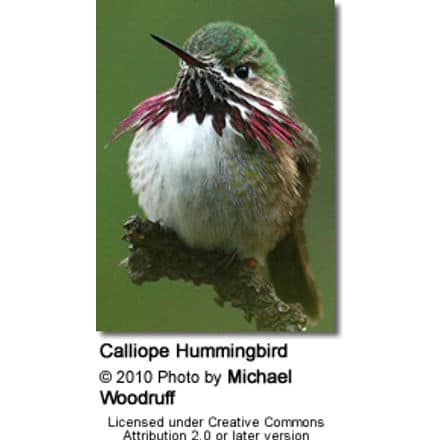Dark Eyed Junco Nesting & Egg Laying: Detailed Guide
In this guide, I explore the nesting and egg-laying habits of the Dark-Eyed Junco.
Dark-eyed junco (Junco hyemalis) is one of North America’s most well-known small birds.
Around 66 percent of the species’ population nests seasonally throughout the continent’s boreal forests, usually on the ground or near the ground.
Once the breeding season begins, juncos turn from hoppy foraging “snowbirds” into dedicated parents who take care of their chicks while they’re nestlings and after the fledging.
Many exciting details about dark-eyed junco nesting are waiting for you to discover them.
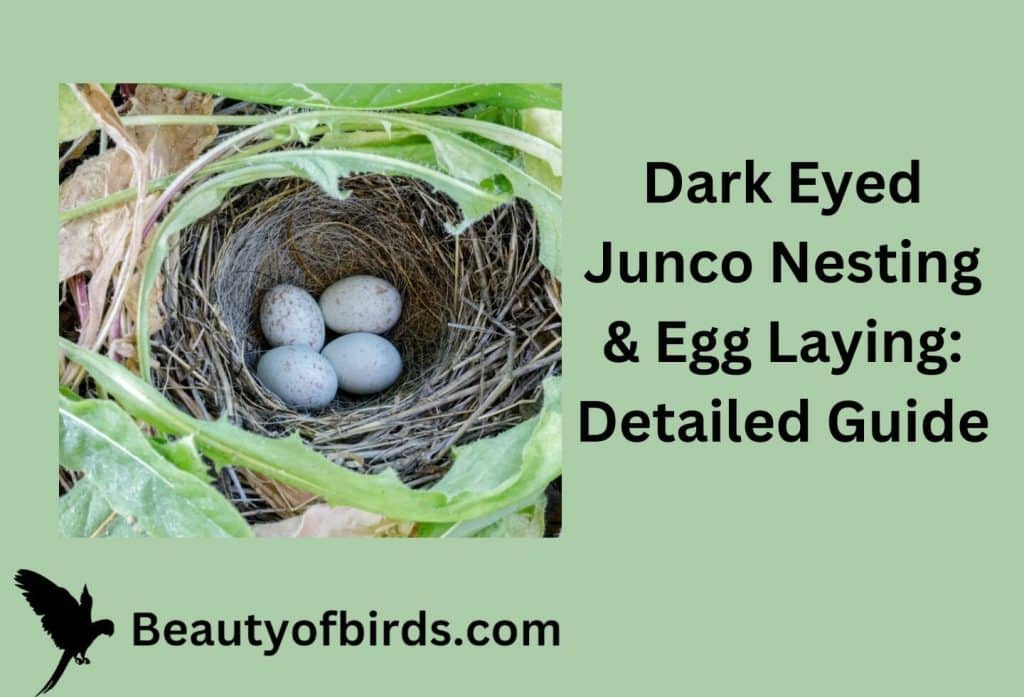
When Do Dark-Eyed Juncos Nest?
The dark-eyed junco breeding season begins in early spring and is over by fall.
After being winter visitors in the southern portions of the continent, the migrating dark-eyed junco population travels back to their summer breeding range in the north of the continent.
The male juncos return first to try to reclaim their previous-year territories and attract the soon-to-arrive females by perching on the highest spots of the landscape and singing.
During courtship, while the female is checking out her potential mate, he always remains in her close proximity.
Do Dark-Eyed Juncos Mate for Life?
Dark-eyed juncos are monogamous but do not mate for life. Their breeding system is known as “socially monogamous.”
The pair share all the couple and parental responsibilities – they will build a nest, defend their territory, and care for the young together.
However, that doesn’t prevent them from mating with the juncos from neighboring territories – and the practice is said to be frequent.

The result of this “neighborhood mischief” is that the males will often raise young sired by the neighboring male.
Similarly, if a female dark-eyed junco loses her primary-social mate, she will quickly form a new pair, often with – you’ve guessed it – the neighboring male.
However, the secondary partner will rarely take care of the female’s original brood, even though he may be an actual father of some of the young.
Where Do Juncos Nest?
Dark-eyed juncos are considered ground-nesters.
The couple picks a spot on the ground, sheltered by dense vegetation, snuggled near or below rocks, upturned trees, or exposed tree roots.
The site is usually located in a forest, but resident urban populations will also use other suitable places like parks. Juncos prefer semi-open habitats in any case.
The female dark-eyed junco is the main nesting engineer – she builds the nest while her partner brings the necessary nesting material.
The nest takes 3 to 7 days to build and measures 3-5.5 inches across.
The most commonly used materials are sticks, leaves, moss, grasses, and animal hair. The female uses rougher materials for outer, basic nest construction.
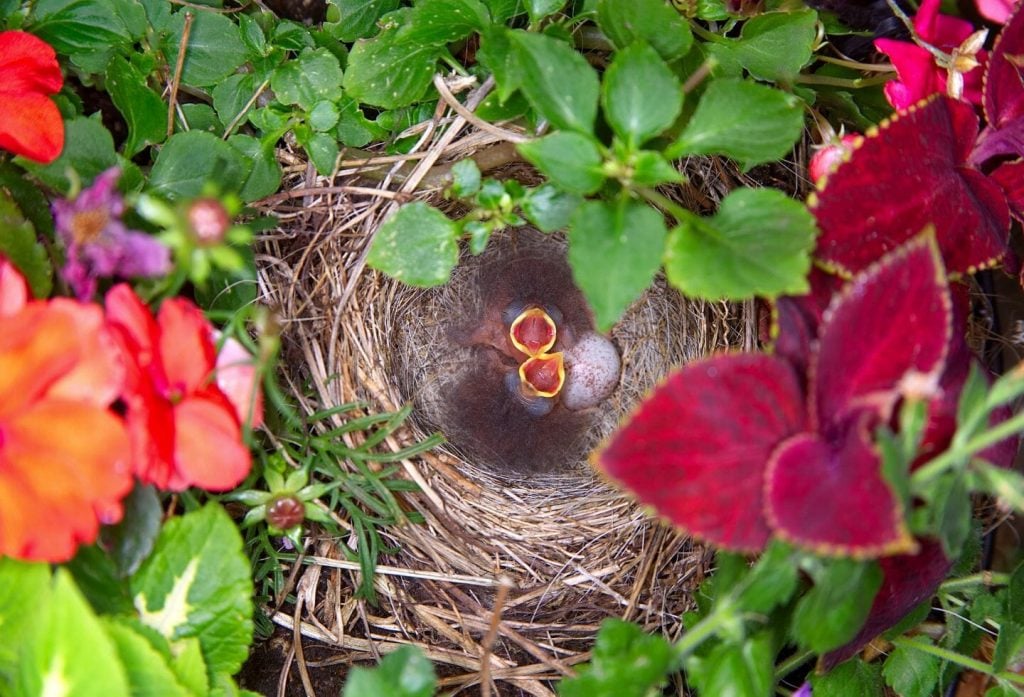
However, she lines the inner side with softer materials so that the delicate skin of her featherless hatchlings wouldn’t be damaged by the tougher stuff.
Dark-eyed junco nests are not always on the ground.
It is estimated that around 13 percent of nests are created above ground – usually in shrubs and lower branches of trees, but also in strange places such as hanging helmets.
However, the dark-eyed junco “nests with a view” are never more than 8 feet above the ground.
The dark-eyed junco nest has an open-cup shape. Although they will nest in atypical places in the urban environment, traditionally, they’ve never used nest boxes.
However, the first dark-eyed junco nesting in an artificial box was documented in 2016, hinting that juncos may also start using nesting boxes in the future.
Once the nest is complete, the next phase takes place – egg laying and incubation.
How Many Eggs Do They Lay?
On average, dark-eyed juncos lay 3 to 5 eggs, and sometimes even 6.
The number of egg clutches per breeding season is 1-3, with the southern junco population commonly having two broods and the urban resident population even more – 3, or even 4 in some cases.
That means that dark-eyed juncos can lay anywhere between 3 to ~15 eggs per season.
If there is more than one clutch, the early-season clutches are more numerous than the late-season clutches.
Resident pairs in urban environments tend to lay more than their migrating counterparts in the wild.
The dark-eyed junco eggs are white or with a greenish tint and have small dark spots.
However, despite all the parental care and protection, not all junco eggs become chicks that survive into adulthood.

Predation, mostly from rodents, plays a big part in how successful the nesting is, and the junco’s success in rearing young often depends on the density of the local rodent population.
Research tells us that in some years, the dark-eyed juncos may fail at up to 85% of nesting attempts due to predation.
However, dark-eyed junco moms and dads are not helpless and will actively – and often victoriously – defend the nest against small rodents.
Dark-Eyed Junco Egg Hatching and Rearing
Like with nest building, male and female dark-eyed juncos divide parental responsibilities clearly among them, until chicks hatch.
The female is the only one sitting on the nest and incubating the eggs – she never swaps places with the male.
Her partner’s duty is to provide food for her while she’s sitting. This phase lasts for 12-13 days while the male feeds her for the most part.
When babies hatch, the female and the male become equal in their responsibilities, taking turns feeding their babies.
The dark-eyed juncos are altricial, which means that the chicks are fully blind, featherless, and otherwise helpless.
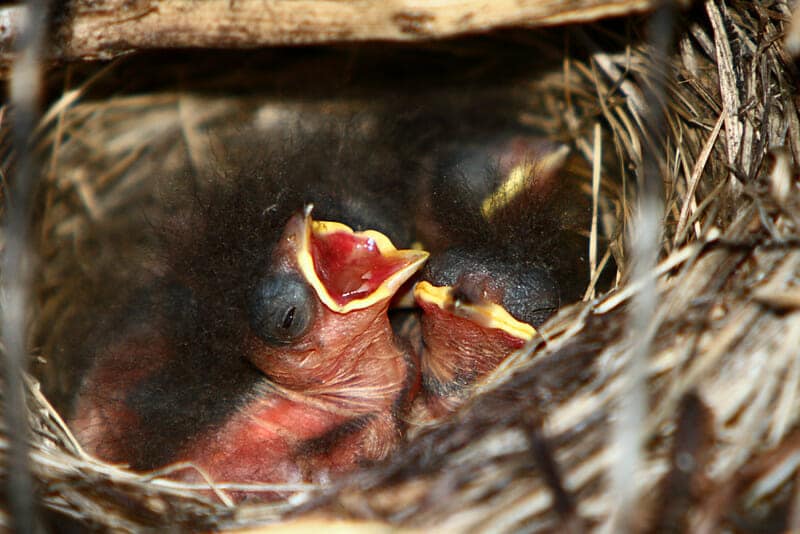
Luckily for them, they grow out of this helplessness quite quickly.
The main dark-eyed junco baby food consists of insects and other invertebrates.
Thus, backyard bird feeders won’t help feed the dark-eyed juncos directly as a food source, but they could benefit the parent birds.
The success of nesting in birds largely depends on the food availability – and not just with juncos.
Interestingly, the dark-eyed junco chicks’ legs develop fast, and they become good at running before they can fly. This is an adaptation to ground nesting to avoid being eaten by a predator.
Although the chicks will fledge (leave the nest) in only 9-13 days, the dark-eyed junco parents will continue to provide food for them for three additional weeks.
The new generation of dark-eyed juncos can start having their own young at one year old, right in the next breeding season.
Wrap Up
Dark-eyed juncos have nesting habits typical of sparrow-like birds but with some interesting twists.
Both parents take care of the young but have different parental responsibilities at different phases of the nesting process.
Both male and female dark-eyed juncos are dedicated parents that actively feed their young and defend their nest.
The chicks are quick to fledge – it takes them under two weeks to become fully mobile. Still, parents continue to feed them for another three weeks.
The entire affair – from nest building to chicks fledging – lasts less than a month!
The studies on dark-eyed junco nesting habits are far from over.
Climate change is increasingly influencing dark-eyed junco range and migration, and consequently, the nesting habits too.
Despite dark-eyed juncos being such familiar birds, they have more surprises in store for biologists and bird enthusiasts.

Frequently Asked Questions
What are the nesting habits of Dark-eyed Junco?
Dark-eyed juncos are usually ground nesters.
Females build the open-cup-shaped nest while the male provides the materials: twigs, grasses, mosses, and leaves.
The female lays 3-6 eggs and incubates them for 12 to 13 days.
Both parents take care of the helpless young and feed them insects and other arthropods and actively defend the nest from predators and other bird intruders.
The chicks fledge in 9-13 days.
How many times a year do juncos lay eggs?
As a general rule, resident junco pairs – especially in the cities – usually have more than one brood per year – and the record is four broods in the Oregon junco San Diego population.
How long do dark-eyed Juncos stay in the nest?
When you add the numbers, the junco family will spend from 21 to 26 days in the nest. In other words – juncos go from egg-laying to chicks fledging in less than one month.
Do Dark-Eyed Juncos Reuse Nests?
However, with more and more resident populations forming, especially in the western range, it remains to be seen if infrequent nest reuse will remain a rule or not.

